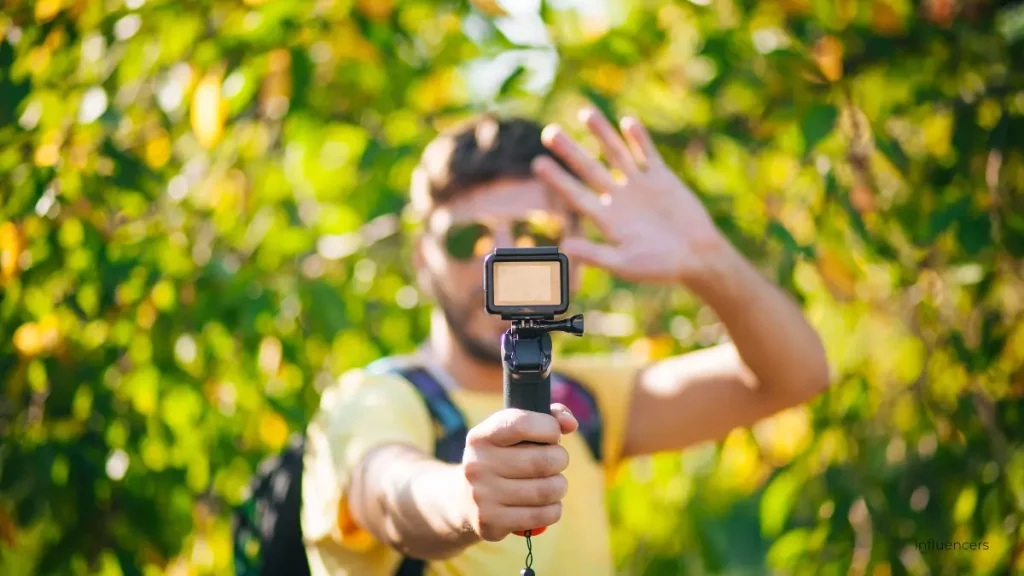Micro‑influencers are defined as creators with 10,000 to 100,000 followers. They often anchor their content in niche topics be it sustainability, local travel, plant care, or tech reviews making them niche influencers who resonate deeply with specific communities.
Nano‑influencers have fewer than 10,000 followers, often ranging from a few hundred to just under 10K. Despite smaller follower counts, they boast exceptionally high engagement and deeply personal connections with audiences.
How They Differ from Macro/Mega Influencers

- Scale vs Trust: Macro/Mega‑influencers (100K+ to millions of followers) offer reach, but often lack genuine connection. Micro and nano creators, by contrast, foster authenticity and trust.
- Engagement Rates: As follower count grows, engagement typically drops. HypeAuditor data shows nano‑influencers (<5K followers) reaching 2.53% engagement, while mega‑influencers hover around 0.92%.
- Cost Efficiency: Smaller influencers often deliver higher ROI at lower costs, a trend growing stronger in 2025–2026 (see Brand Benefits).
Current Trends (2025–2026)
HubSpot identifies continued growth of micro‑influencers as a key social media trend in 2025. Brands are increasingly favoring creators who feel accessible and authentic.
Market Growth & Performance
- The global influencer marketing industry is projected to surge by 35.63% between 2025 and 2026, fueled by AI tools and social commerce integration.
- Brands gain approximately $4.12 for every $1 spent on Instagram influencer campaigns.
- The average influencer marketing CPM has dropped 53% year‑over‑year, now averaging $4.63, offering twice the reach at the same cost emphasizing cost‑effective brand collaborations.
- Global influencer marketing spend has reached $32.55 billion in 2026, with a clear pivot to ROI‑driven strategies, AI integration, and a focus on micro and mid‑tier creators.
Authenticity & Niche Engagement
According to Sprout Social’s 2025 report, while most influencers charge $250–$1,000 per post, 71% offer discounts for longer-term commitments, encouraging deeper partnerships. At the Cannes Lions event, brand leaders emphasized micro‑influencers, niche engagement, and authenticity as core to audience resonance.
Also Read: The Power of SEO in Digital Marketing
Brand Benefits
- Cost‑Effectiveness & Better ROI: Lower CPMs and $4.12 returns underscore that small influencers are efficient spenders. Unilever’s shift from traditional ads to influencer campaigns has shown superior returns versus any other allocation of marketing funds.
- Hyper‑Targeted Audiences: Micro/nano creators cater to niche communities—whether specific beauty interests, pet owners, or local consumers. Unilever notably wants an influencer in every zip code to maximize local relevance.
- Trust Factor & Authenticity: Smaller voices feel genuine. Studies show 63% of shoppers are more likely to buy when recommended by a trusted influencer and 7% of engagement from nanos convert to sales.
- Long‑Term Partnerships: Brands save by engaging micro‑influencers over time, rather than one-off mega‑deals.
Platform Preferences
TikTok & Instagram: Highly visual and trend-driven, TikTok and Instagram remain powerhouses for micro/nano creators. Unilever’s #CleanTok campaign exemplified massive viral ROI with 300M+ views and a 38% sales lift among young UK consumers.
LinkedIn: For B2B micro‑influencers, LinkedIn serves as a platform to convey thought leadership and industry insights. AgencyAnalytics notes growing traction in influencer B2B campaigns.
YouTube Shorts: Short-form video engages communities. While stats aren’t explicit, YouTube Shorts paired with TikTok and IG Reels create cross‑platform content flow for small creators.
Community & Platform Alignment: HubSpot underscores greater emphasis on community as a trend for 2026, favoring platforms that enable ongoing dialogue and community growth.
AI & Automation Impact
AI‑Powered Discovery Tools
AI platforms are making it easier to discover and vet micro and nano creators at scale vital for managing hundreds or thousands of relationships.
- Tools can cut influencer vetting time by 50%, offering real-time updates, fake‑follower detection, and ecommerce integration.
- Aspire sees 91% of experts name technology as the driver of change in influencer marketing, thanks to AI matching, automated management, and real‑time analytics.
- CreatorIQ offers AI-powered influencer recommendations based on campaign needs and target audiences, consolidating data across platforms.
- Platforms like GRIN simplify end‑to‑end campaign management from discovery to reporting.
- SuperAGI and similar guides point to AI continuing to evolve influencer discovery and collaboration efficiencies.
- Dreamwell AI aims to automate 80–90% of influencer marketing tasks identification, valuation, outreach with minimal human input.
Also Check: Top Followed Instagram Accounts
Future Predictions (Beyond 2026)
Continued Democratization: Influencer marketing will further embrace everyday voices. HubSpot predicts the rise of influencers as “guides” rather than “heroes,” with authenticity exceeding polish.
AI‑Enabled Scale with Human Touch: Brands will increasingly rely on AI for the heavy lifting identification, matching, performance tracking while humans curate deeper creative and strategic alignment.
Dreamwell AI’s mission to automate 80–90% of tasks points to this shift.
Community‑Driven Campaigns: Authentic community engagement over broadcasts. People trust peers; social-first strategies will continue to favor small creators as connective tissue.
Integration with Social Commerce: As social commerce grows, influencer content will drive direct purchases. Platforms like TikTok, Instagram Shopping, and Amazon-linked tools will pair well with micro/nano campaigns, guided by AI tracking.
Conclusion
By 2026, micro and nano influencers have become central to authentic influencer marketing, valued for their high engagement, trustworthiness, cost efficiency, and niche specificity. With AI tools now enabling scalable discovery, analytics, and campaign automation, brands are empowered to run ROI-first influencer programs. As platforms evolve and AI matures, expect an even more authentic, community-focused future where everyday creators lead the charge in brand storytelling.
